21-1679






 Weather Alert
Weather Alert
Handheld CB RADIO
Thank you for purchasing your
Weather Alert Handheld CB
Radio from RadioShack.
What???s Included
CB Radio
Ni-MH Battery Pack
AA Battery Case
AC Charger
Antenna
Hand Strap
Belt Clip
User???s Guide
FCC Rules
Please read this user???s guide before installing, setting up and using your new CB radio.
www.radioshack.com
Antenna
Channel
Selection
"UTTONS ??/??
H/L BEEP
PTT
�0USH??TO??4ALK
Internal
Speaker
SQUELCH
OFF/VOLUME

 CH9/19 SCAN
CH9/19 SCAN
CB/WX
Internal Microphone
LOCK/ALERT OFF
LIGHT
Attaching the Belt Clip
To attach the belt clip, slide it up until it locks into place.
To remove the belt clip, pull the tab gently and slide the belt clip down.
Hand Strap Hole
Tab
Belt
Clip
Powering Your CB Radio
You can power your CB radio from one of these four sources:
???The supplied rechargeable Ni-MH battery pack
???Eight AA batteries (not included) using the supplied battery case
???AC power using an AC-to-DC power supply (not included)
???Vehicle power using a DC power cord (not included)
Using the Ni-MH Battery Pack
Charge the Ni-MH battery pack (using the supplied AC charger)
FOR�ABOUT����HOURS�PRIOR�TO�USING�IT�FOR�THE�??RST�TIME��??FTERWARD
� it takes 14-16 hours to charge the battery pack when it is fully discharged.
You can charge the battery pack while it is installed or removed. But the CB radio does not work during charging.
To charge the battery pack:
Connect the AC Charger to the CHG Jack, then plug it into an AC outlet. The CHARGE Indicator lights red and charging starts.
Note: The supplied AC charger is for charging only, not for directly powering the CB.
4O??INSTALL??THE??BATTERY??PACK�
Slide the battery pack onto the CB radio until it clicks. The battery
PACK�??TS�ONTO�THE�#"�RADIO�ONLY� one way. Do not force it.
To remove the battery pack, slide the battery pack in the arrow direction while holding up the latch.
Latch
CHG Jack
CHARGE
Indicator
Slide to remove battery pack
4


 Powering
Powering
 Your CB Radio
Your CB Radio
#AUTIONS�
???To avoid injury, do not connect the AC charger to a ceiling outlet. After charging, disconnect the AC charger.
???You must use a Class 2 power supply that provides 16V DC and delivers at least 200mA. The barrel plug???s center must
BE�POSITIVE�AND�THE�BARREL�PLUG�MUST�??T�THE�#"mS�CHG jack. 4HE�SUPPLIED�??#�CHARGER�MEETS�THESE�SPECI??CATIONS��5SING�
AN�ADAPTER�THAT�DOES�NOT�MEET�THESE�SPECI??CATIONS�COULD� damage the CB radio or adapter.
???Always connect the AC charger to the battery pack before you connect it to an AC outlet, and disconnect the AC charger from the AC outlet before you disconnect it from the battery pack.
???Overcharging your battery pack could shorten its life.
???Do not charge your battery pack at temperatures below 14??F (???10??C) or above 131??F (55??C).
???You cannot recharge the Ni-MH battery pack using DC power.
Recycle Rechargeable Batteries
Placing rechargeable batteries in the trash can be

 harmful to the environment. Instead, recycle old rechargeable batteries at your local RadioShack store free of charge. RadioShack participates in the RBRC?? battery recycling program, and is committed to preserving the environment and conserving natural resources. Call 1-800-THE-SHACK (1-800- 843-7422) for more information.
harmful to the environment. Instead, recycle old rechargeable batteries at your local RadioShack store free of charge. RadioShack participates in the RBRC?? battery recycling program, and is committed to preserving the environment and conserving natural resources. Call 1-800-THE-SHACK (1-800- 843-7422) for more information.
Using the AA Battery Case
1.Turn off the CB radio if it is on.
2.Pull the halves of the case apart to open it. Insert eight AA batteries, matching the polarity marks (+ and ???). Snap the halves of the case together to close it.
5

3.Slide the battery case onto the CB radio until it clicks. The
BATTERY�CASE�??TS�ONTO�THE�#"�RADIO�ONLY�ONE�WAY��$O�NOT� force it.
Replace the batteries when the sound becomes weak or distorted, ;appears, or the CB radio stops working.
"ATTERY??.OTES�
???Dispose of old batteries promptly and properly. Do not burn or bury batteries.
???Use only fresh batteries of the required size and type.
???Do not mix old and new batteries, different types of batteries (standard, alkaline, or rechargeable), or rechargeable batteries of different capacities.
???If you do not plan to use the CB radio with batteries for two weeks or longer, remove the batteries. Batteries can leak chemicals that can destroy electronic parts.
Using AC Power
To power your CB radio from your home, you will need a 12V DC power supply that provides a minimum of 2.5A at 12V and a DC power cord (neither included).
1.Turn off the CB radio if it is on.
2.Use the DC power cord to connect the CB???s 12V DC PWR Jack and the DC power supply.
3.Connect the DC power supply to an AC outlet.
#AUTIONS�
???You must use a Class 2 power supply that provides regulated 13.8V DC and delivers at least 2.5A. The barrel plug???s center
MUST�BE�POSITIVE�AND�THE�BARREL�PLUG�MUST�??T�THE�#"mS�12V DC PWR jack. Using an adapter that does not meet these
SPECI??CATIONS�COULD�DAMAGE�THE�#"�RADIO�OR�ADAPTER�
6











 Powering
Powering
 Your CB Radio
Your CB Radio
???Always connect the power supply to the CB radio before you connect it to an AC outlet, and disconnect the power supply from the AC outlet before you disconnect it from the CB radio.
Using Vehicle Power
To power your CB radio from your vehicle, you will need a DC power cord (not included). You may also need a roof-mounted antenna to improve transmission quality and increase the transmission range.
1.Turn off the CB radio if it is on.
2.Use the DC power cord to connect the CB???s 12V DC PWR jack and the vehicle???s 12V power source, such as the cigarette-lighter socket.
3.Turn on the CB radio to use.
#AUTIONS�
???You must use a Class 2 power supply that provides regulated 12V DC and delivers at least 2.5A. The barrel plug???s center
MUST�BE�POSITIVE�AND�THE�BARREL�PLUG�MUST�??T�THE�#"�RADIOmS�
12V DC PWR jack. Using an adapter that does not meet
THESE�SPECI??CATIONS�COULD�DAMAGE�THE�#"�RADIO�OR�ADAPTER�
???Always connect the power supply to the CB radio before you connect it to the vehicle outlet, and disconnect the power supply from the outlet before you disconnect it from the CB radio.
7
Connecting Your CB Radio
Installing the Antenna
To install the supplied antenna, align the two slots on the antenna connector with the tabs on the BNC connector of the CB radio. Push the antenna connector to the CB radio and rotate the antenna connector clockwise until it locks into place.
Installing an Optional Antenna
The CB???s BNC connector allows you to use a variety of optional antennas, including external mobile antennas and outdoor base station antennas.
Always use the 50-ohm, RG-58, or RG-8 coaxial cable to connect an outdoor antenna. If the antenna is over 50 feet from the CB radio, use the RG-8 low-loss dielectric coaxial cable.
Safety Precaution:
If an outside antenna is installed, be sure the antenna system is grounded so as to provide protection against voltage surges and built-up static charges. When installing the antenna, be careful not to touch overhead power lines as contact with them might be fatal.
Connecting an External Speaker or Microphone
Connect an external speaker (not included) to the SPK jack of your CB radio. This mutes the CB???s internal speaker.
Connect an external microphone (not included) to the MIC jack of your CB radio. This disables the CB???s internal microphone.











 Operating
Operating
 Your CB Radio
Your CB Radio
Operating Your CB Radio
Receiving
1.Turn SQUELCH fully anticlockwise.
2.Turn on the CB radio. A channel number and the signal meter appear. If necessary, press CB/WX so that a channel number and the signal meter appear.
3.Press ?? or ?? to select the desired channel.
4.Adjust OFF/VOLUME to the desired volume level.
5.Slowly turn SQUELCH back clockwise just until the noise stops.
Note: Do not turn SQUELCH too far clockwise because you might cut out weak signals.
RX below the signal meter indicates the CB radio is ready to receive transmissions.
Transmitting
4O??TRANSMIT??A??MESSAGE�
1.Press and hold PTT. TX appears below the signal meter and the signal meter shows the output level. Hold the CB radio 2???3 inches from your mouth and speak in a
normal voice to the internal microphone.
��� 7HEN�YOU�??NISH�SPEAKING
�RELEASE�PTT.
.OTES�
???If you transmit a message while the CB radio is displaying a weather alert (see Understanding Digital Weather Alert), the alert tone stops and WX displays steadily. To stop the alert tone without transmitting a message, press LOCK/ALERT OFF.
9

???To avoid overheating the internal circuit, do not press and hold PTT nonstop for over two minutes.
Safety Precaution
Your wireless hand-held portable transceiver contains a low power transmitter. When the Push-to-Talk (PTT) button is pushed it sends out radio frequency (RF) signals. The device is authorized to operate at a duty factor not to exceed 50%. In August 1996, the Federal Communications Commissions (FCC) adopted RF exposure guidelines with safety levels for hand-held wireless devices.
To maintain compliance with the FCC???s RF exposure guidelines hold the transmitter and antenna at least 1 inch (2.5 centimeters) from your face and speak in a normal voice, with the antenna pointed up and away from the face. If you wear the handset
on your body while using the headset accessory, use only the supplied belt clip for this product and when transmitting, take it out of the belt to ensure that the antenna is at least 1 inch (2.5 centimeters) from your body.
Settings
High/Low Power Level
Press H/L BEEP to switch between low power level (LOW appears) and high power level.
Note: Low power level reduces the range of the CB radio.
Backlight
Press LIGHT to turn on the backlight; press again to turn off. The backlight turns off automatically after 10 seconds.
Key Tone
To activate the key tone, press and hold H/L BEEP for 2 seconds. ??Gappears. The CB radio sounds a beep when you press any key except PTT.
To disable the key tone, press and hold H/L BEEP for 2 seconds again so that ??Gdisappears.
10
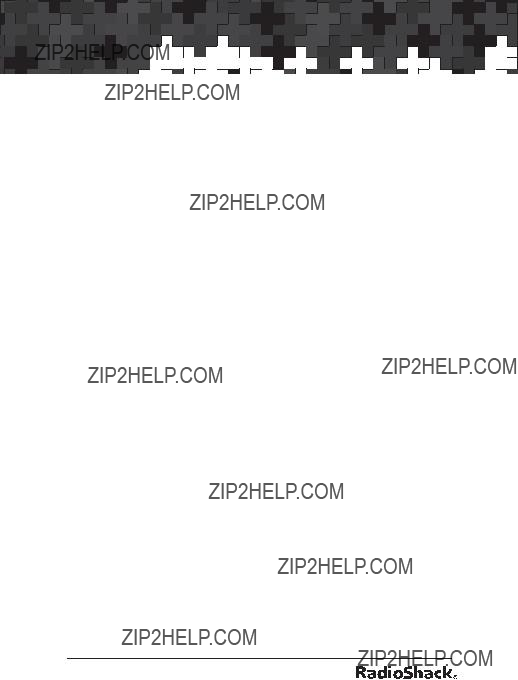


 Operating
Operating
 Your CB Radio
Your CB Radio
Key Lock
To activate key lock, press and hold LOCK for 2 seconds. 6appears. This locks all keys except PTT and LIGHT. To
unlock key control, press and hold LOCK for 2 seconds again.
Power Save
If you do not press any key or if the CB radio does not receive any signal for about 10 seconds, the CB radio automatically enters power save mode. P. SAVE ??ASHES�
Scanning Channels
1.Press CB/WX to select the CB or weather mode.
2.Press and hold CH9/19 SCAN for 2 seconds. SCAN appears, and the CB radio scans through all channels in the selected band. When it receives a strong signal, scanning stops.
3.To deactivate scanning, press and hold CH9/19 SCAN for 2 seconds or press the ?? or ??�key.
.OTES�??
p� 7HEN�YOU�TURN�ON�THE�#"�RADIO�FOR�THE�??RST�TIME
�THE�SCAN� feature is automatically set to ON in the weather band.
??? To change weather channels manually, press the ?? or ?? key.
Using Channels 9 and 19
Channel 9 is reserved for motorist assistance and for reporting emergency information about accidents, hazardous road conditions, etc. Channel 19 is used by truck drivers for general communication purposes.
Press CH9/19 SCAN once to select channel 9, press again to select channel 19, press again to return to the previously selected channel.
.OTES�??
??? When you select channel 9 or 19, you cannot press ?? or ?? to change channels.
??? Always give priority to emergency messages on channel 9.
Listening to the Weather Band
The FCC has allocated channels for use by National Oceanic and Atmospheric Administration (NOAA). Regulatory agencies in other countries have also allocated channels for use by their weather reporting authorities.
NOAA and your local weather reporting authority broadcast your local forecast and regional weather information on one or more of these channels.
Listening to a Weather Channel
Note: You cannot adjust the power level or switch to
channel 9 or 19 while listening to a weather channel.
Turning Digital Weather Alert On and Off
???Digital weather alert automatically scans in the background when you select the CB mode, unless you turn it off.
???Press LOCK/ALERT OFF to turn digital weather alert on and off.
In CB mode, WX displays as described below.
12











 Operating
Operating
 Your CB Radio
Your CB Radio
Understanding Digital Weather Alert
The weather service precedes each weather alert with a digitally-
ENCODED�3??-%� 3PECI??C�??REA�-ESSAGE�%NCODING
�SIGNAL
�THEN� a 1050 Hz tone. When your local weather station broadcasts
a weather alert signal, the CB radio sounds an alert tone and displays a message showing the alert level.
.OTES�
???The CB radio does not display the actual location referenced by SAME messages. It uses only the message portion of the SAME signal.
???If severe weather threatens, do not wait for an alert tone; tune to the weather broadcast and monitor the weather information.
???If a weather signal ends, the CB radio beeps three times
(when the key tone is turned on) and only when the weather
SIGNAL�ENDS�THE�??RST�TIME
�THEN�WX�??ASHES�TO�INDICATE�THERE�IS� no signal.
13
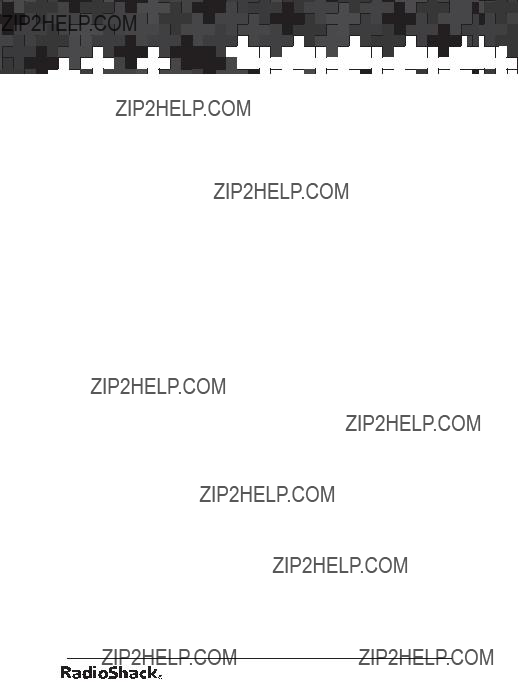
Additional Information
Legal Use of Your CB Radio
The CB Radio service is a private, two-way, short-distance voice communications service for personal or business activities. For rules regarding legal CB radio use, see Part 95, Subpart D: FCC Rules for Operating a Citizens Band (CB) Radio published by the FCC.
Common Uses for a CB Radio
p� 7ARN�OF�TRAF??C�TIE�UPS�AHEAD�
???Help truck drivers and delivery personnel learn road and
TRAF??C�CONDITIONS�AND�GET�ASSISTANCE�IN�LOCATING�DESTINATIONS�
???Provide fast help in the event of emergency or breakdown.
???Help construction crews coordinate the activities of different work crews.
p� ??SSIST�COMMUNICATION�BETWEEN�SECURITY�OF??CERS�
???Provide weather and road information.
???Contact friends or other CB users on trips.
p� +EEP�IN�TOUCH�WITH�YOUR�OF??CE�OR�HOME�
p� "RING�MORE�FUN�FOR�CAMPING
�??SHING
�AND�OTHER�SPORTS��HELP� LOCATE�A�FRIEND�OR�??ND�OUT�WHATmS�COOKING�BACK�AT�CAMP�
Transmission Courtesy
???Wait for a pause in someone else???s transmission before you ask for a break.
???If you do not receive an answer to your call after a second attempt, sign off and wait several seconds before trying again.
???Do not hold down PTT when you are not talking. (This is called dead keying.)
???Assist callers with directions, information about road conditions, and any other reasonable requests.
Transmission Range
The maximum range and quality of CB transmissions vary depending on the following conditions:
14






 Additional Information
Additional Information
???Type and quality of the antenna.
???Height of the antenna???s mounting location (the higher the antenna, the better the signal???s range).
???Surrounding terrain (mountains and tall buildings limit the range).
???Weather conditions.
???Number of nearby CBs operating on the same channel.
Note: Your CB radio???s transmission range is generally line-of- sight. To ensure maximum range, always keep the battery pack fully charged or use fresh batteries.
Common 10-Codes
Citizens Band radio operators have largely adopted the 10- codes for standard questions and answers. These codes permit faster communication and better understanding in noisy areas. The following table lists some of the more common codes and their meanings:
15
Note: Although this table lists the meanings of the 10-codes in the form of a statement, they can also be phrased as questions (10-6: Are you busy? 10-20: What is your location?)
Frequency Range
Your CB radio receives and transmits on the following 40 CB channels:
In addition, your CB radio can receive these weather service channels:
16
3PECI??CATIONS�ARE�SUBJECT�TO�CHANGE�AND�IMPROVEMENT�WITHOUT�NOTICE��
Actual product may vary from the images found in this document.
Care
Keep the CB radio dry; if it gets wet, wipe it dry immediately. Use and store the CB radio only normal temperature environments. Handle the CB radio carefully; do not drop it. Keep the CB radio away from dust and dirt, and wipe it with a damp cloth occasionally to keep it looking new.
Modifying or tampering with the CB radio???s internal components can cause a malfunction and might invalidate its warranty and avoid your FCC authorization to operate it. If your CB radio is not performing as it should, take it to your local RadioShack store for assistance.
17
RF Emission
 s Information
s Information
RF Emissions Information
This equipment has been tested and found to comply with the limits for a Class B digital device, pursuant to Part 15 of the FCC Rules. These limits are designed to provide reasonable protection against harmful interference in a residential installation. This equipment generates, uses, and can radiate radio frequency energy and, if not installed and used in accordance with the instructions, may cause harmful interference to radio communications. However, there is no guarantee that interference will not occur in a particular installation. If this equipment does cause harmful interference to radio or television reception, which can be determined by turning the equipment off and on, the user is encouraged to try to correct the interference by one or more of the following measures:
???Reorient or relocate the receiving antenna.
???Increase the separation between the equipment and receiver.
???Connect the equipment into an outlet on a circuit different from that to which the receiver is connected.
Consult your local RadioShack store or an experienced radio/TV technician for help. If you cannot eliminate the interference, the FCC
REQUIRES�THAT�YOU�STOP�USING�YOUR�PRODUCT��#HANGES�OR�MODI??CATIONS� not expressly approved by RadioShack may cause interference and void the user???s authority to operate the equipment.
This device complies with Part 15 of the FCC Rules. Operation is subject to the following two conditions: (1) this device may not cause harmful interference, and (2) this device must accept any interference received, including interference that may cause undesired operation.
7ARNINGS�
???Any adjustment to this equipment is recommended to be performed by or under the immediate supervision and responsibility
OF�A�PERSON�CERTI??ED�AS�TECHNICALLY�QUALI??ED�TO�PERFORM�TRANSMITTER� maintenance and repair duties in the private land mobile services
AND�??XED�SERVICES�BY�AN�ORGANIZATION�OR�COMMITTEE�REPRESENTATIVE�OF� users of those services.
???Replacement of any transmitter component (crystal, semiconductor, etc.) for this equipment could result in violation of FCC rules.
18


 Do Stuff
Do Stuff
Do Stuff
Do more with your CB radio.
�
7ATT??(EAVY
DUTY??%XTENSION??
Speaker
???Amplify at home or in the car.
���
7ATT??!MPLI??ED??-OBILE??
%XTENSION??3PEAKER
???Amplify over loud noises.
Limited Warranty
This product is warranted by RadioShack against manufacturing defects in material and workmanship under normal use for one (1) year from the date of purchase from RadioShack company-owned stores and authorized RadioShack franchisees and dealers. EXCEPT AS PROVIDED HEREIN, RadioShack MAKES NO EXPRESS
WARRANTIES AND ANY IMPLIED WARRANTIES, INCLUDING THOSE OF
MERCHANTABILITY AND FITNESS FOR A PARTICULAR PURPOSE, ARE LIMITED
IN DURATION TO THE DURATION OF THE WRITTEN LIMITED WARRANTIES CONTAINED HEREIN. EXCEPT AS PROVIDED HEREIN, RadioShack SHALL HAVE
NO LIABILITY OR RESPONSIBILITY TO CUSTOMER OR ANY OTHER PERSON OR
ENTITY WITH RESPECT TO ANY LIABILITY, LOSS OR DAMAGE CAUSED DIRECTLY
OR INDIRECTLY BY USE OR PERFORMANCE OF THE PRODUCT OR ARISING
OUT OF ANY BREACH OF THIS WARRANTY, INCLUDING, BUT NOT LIMITED TO,
ANY DAMAGES RESULTING FROM INCONVENIENCE, LOSS OF TIME, DATA,
PROPERTY, REVENUE, OR PROFIT OR ANY INDIRECT, SPECIAL, INCIDENTAL, OR CONSEQUENTIAL DAMAGES, EVEN IF RadioShack HAS BEEN ADVISED OF THE
POSSIBILITY OF SUCH DAMAGES.
Some states do not allow limitations on how long an implied warranty lasts or the exclusion or limitation of incidental or consequential damages, so the above limitations or exclusions may not apply to you.
In the event of a product defect during the warranty period, take the product and the RadioShack sales receipt as proof of purchase date to any RadioShack store. RadioShack will, at its option, unless otherwise provided by law: (a) correct the defect by product repair without charge for parts and labor; (b) replace the product with one of the same or similar design; or (c) refund the purchase price. All replaced parts and products, and products on which a refund is made, become the property of RadioShack. New or reconditioned parts and products may be used in the performance of warranty service. Repaired or replaced parts and products are warranted for the remainder of the original warranty period. You will be charged for
repair or replacement of the product made after the expiration of the warranty period. This warranty does not cover: (a) damage or failure caused by or attributable to
acts of God, abuse, accident, misuse, improper or abnormal usage, failure to follow instructions, improper installation or maintenance, alteration, lightning or other incidence of excess voltage or current; (b) any repairs other than those provided by a RadioShack Authorized Service Facility; (c) consumables such as fuses or batteries;
(d) cosmetic damage; (e) transportation, shipping or insurance costs; or (f) costs of product removal, installation, set-up service adjustment or reinstallation.
4HIS�WARRANTY�GIVES�YOU�SPECI??C�LEGAL�RIGHTS
�AND�YOU�MAY�ALSO�HAVE�OTHER�RIGHTS�WHICH� vary from state to state.
Protect the environment by recycling used electronics.
Go to www.ecyclingcentral.com??TO????ND??A??RECYCLE??LOCATION??NEAR??YOU�







 Weather Alert
Weather Alert










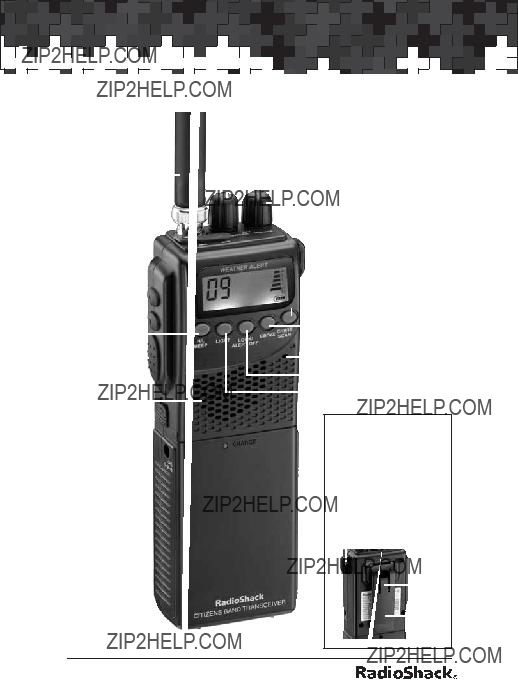











 A
A 

 CH9/19 SCAN
CH9/19 SCAN











 Powering
Powering
 Y
Y

 harmful to the environment. Instead, recycle old rechargeable batteries at your local
harmful to the environment. Instead, recycle old rechargeable batteries at your local 




















 Powering
Powering
 Y
Y

























 Operating
Operating
 Y
Y




 Operating
Operating
 Y
Y













 Operating
Operating
 Y
Y












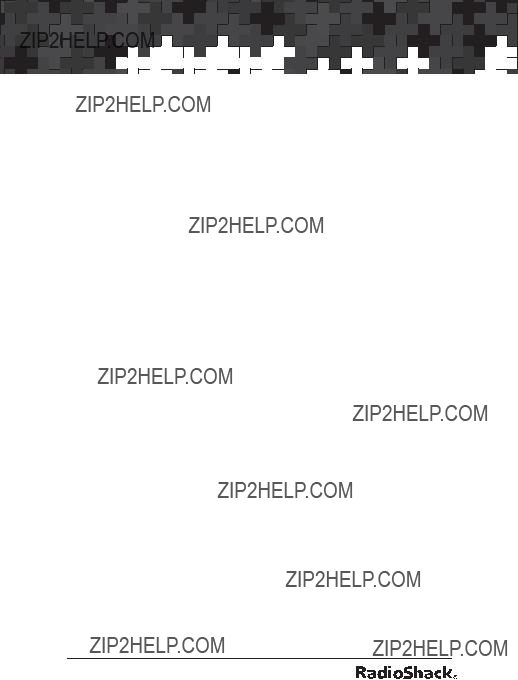








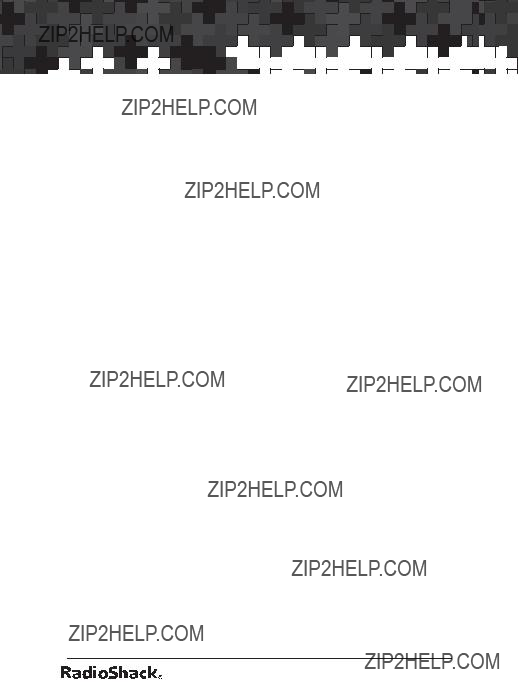











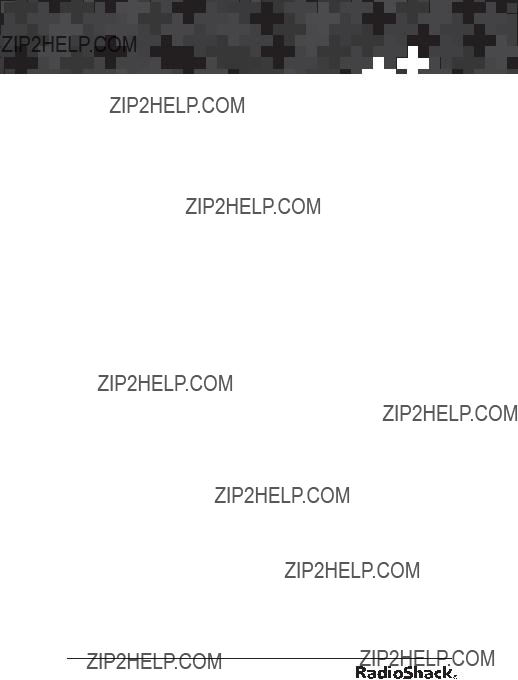
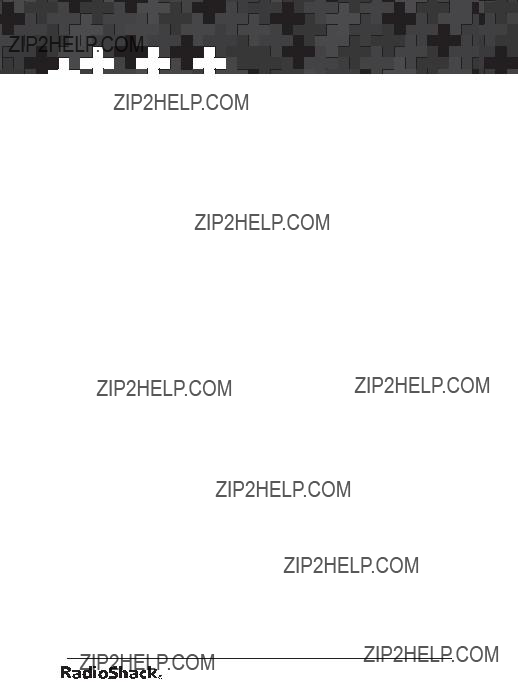

 s Inf
s Inf


 Do St
Do St
